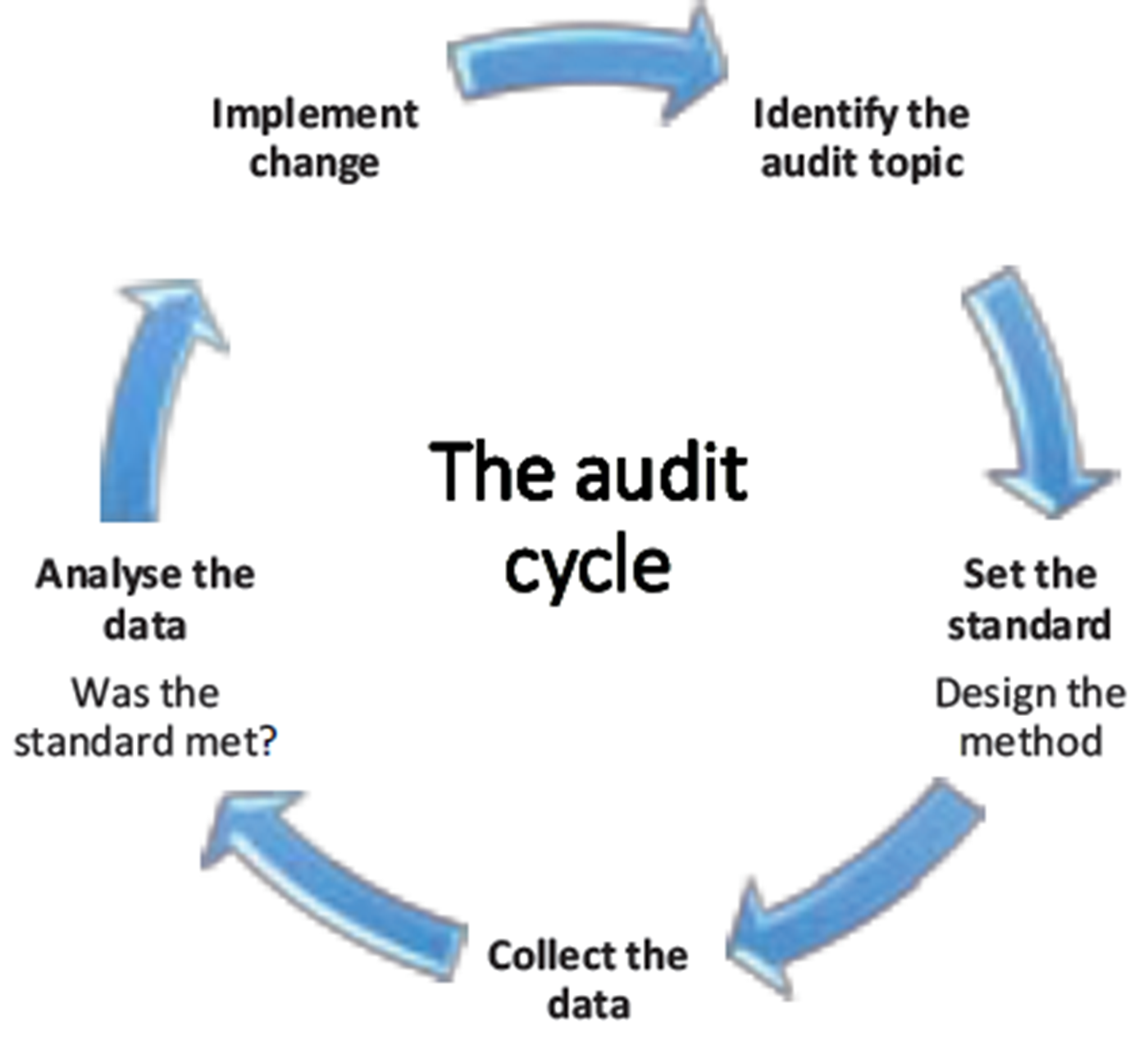March 2024 - Developing clinical audit skills
What is clinical audit and why is it important?
Clinical audit is the term used for any audit undertaken by health care professionals. These audits are a quality improvement measure and therefore play a key role in clinical governance. The General Optical Council's ‘Outcomes for Registration and Approved Qualifications’ emphasise the value of clinical audits. Outcome 7 (Lifelong Learning) encourages the use of data (such as that gathered from clinical audits) to inform one's own learning and development needs, meet service delivery requirements and improve the quality of care for patients. In the GOC’s Outcomes for Approved Qualifications (Additional Supply, Supplementary Prescribing, and/or Independent Prescribing), Outcome 4 (Prescribing practice) also highlights the need to understand and use audit to improve IP prescribing practice. Clinical audits can be a particularly useful exercise for learners, helping them to develop clinical competence, as detailed in SPOKE's Project Two - best practice approaches to teaching and learning. Furthermore, they offer learners network opportunities, the ability to demonstrate commitment to a particular speciality and can generate further research projects. Optometry and ophthalmic dispensing learners should be encouraged to complete audits early in their career to inform personal development needs and improve prescribing practice. Course leaders may also wish to use audits as part of assessment programmes.
This Clinical Audit Teaching Toolkit has been produced with support from the Healthcare Quality Improvement Partnership and provides a plethora of resources to help embed and develop clinical audit skills in learners. As this toolkit highlights, ‘successful clinical audit often centres on a key person taking a pro-active approach in leading clinical audit projects/programmes.’ It is therefore vital that facilitators gauge the learners' attitudes towards clinical audits before conveying the key steps in the clinical audit process. Materials provided in the toolkit range from video demonstrations, group tasks, learner centred activities, questions and answers, critiquing of real-life clinical audit projects and quiz based ice breakers.
How can it be used in practice?
The College of Optometrists have set out the four stage process of auditing and have produced this CPD course looking at ways to conduct and implement a clinical audit.
The Healthcare Quality Improvement Partnership have produced updated criteria for best practice in clinical audit.
When teaching learners about conducting a clinical audit, emphasis should be placed upon:
- identifying the right topic and engaging all relevant stakeholders from the initial planning stage. Gaining feedback from stakeholders will be important later on in the process
- following established guidelines to identify best practice and method design
- gathering and analysing relevant data against the agreed standards/guidelines
- feeding back results. How will learners use this data? Discuss possible changes
- implementation of proposed solutions or changes
- conducting a re-audit.
How to overcome challenges faced during a clinical audit
Learners may face challenges through the clinical audit process, but being aware of potential challenges can mitigate their effects.
Attention must be paid to the whole cycle. The chain is only as strong as its weakest link. Criticism points to the time spent on initial data collection and not enough time on intervention. Boyle and Keep highlight the need for a collective approach with emphasis on targeted data collection and rapid intervention, testing of interventions and clinical staff engagement.
Learners may feel unsupported during the audit process. As Robbie Foy et al point out in their article Revitalising audit and feedback to improve patient care, "clinicians might feel threatened rather than supported by top-down feedback and rightly question whether rewards outweigh efforts invested in poorly designed audit.” This view supports the need for strong relationships, and an integrated approach with a defined purpose for all involved.
Resourcing can be a barrier to effective audits, so careful planning of resource availability, for the initial audit process and beyond is necessary. “There are ways to maximise returns from the considerable resources. These include applying what is already known, paying attention to the whole audit cycle, getting the right message to the right recipients, making more out of less data, embedding research to improve impact, and harnessing public and patient involvement.” [2]
With thorough planning and consideration, a clinical audit has the potential to provide students with a unique learning experience where they can explore a speciality, develop critical thinking skills, learn how to collect and analyse data and have a direct impact on the quality of patient care.
Have your say
We welcome contributions to Topic of the month and would love to hear your views. Please email spokehub@college-optometrists.org with suggested themes you would like covered.
Bibliography and references
[1] What is a clinical audit? (abdo.org.uk)
[2] Revitalising audit and feedback to improve patient care | The BMJ
ABDO's Saima Begum Naroo highlights that, “without some form of a clinical audit, it is challenging to know whether current practice is effective and even more challenging to demonstrate this to others”
Audit & Data | The Royal College of Ophthalmologists (rcophth.ac.uk)
This Best-Practice-in-Clinical-Audit (2020) sets out criteria for best practice in local clinical audit
Clinical Audit Support Centre, 10 really useful websites for those with an interest in clinical audit
Julia Blagburn (2022), How to conduct a clinical audit in six steps, The Pharmaceutical Journal
Gocuk SA et al's intervention study in age-related macular degeneration found that audit has the role to improve optometric clinical care of AMD
Dr. Adam T. Hexter, MBBS BSc (2013) How to Conduct a Clinical Audit: a guide for medical students
National Institute for Clinical Excellence (2022) Principles for Best Practice in Clinical Audit Radcliffe Medical Press
UHBristol Clinical Audit Team (2009) What is Clinical Audit?
